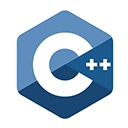C++ is a critical programming language in the aerospace and aviation industries, providing the necessary performance, real-time capabilities, and low-level control for various applications. In this guide, we'll introduce you to the role of C++ in aerospace and aviation and provide a sample code example for a simple aviation application.
1. C++ in Aerospace and Aviation
C++ is used in aerospace and aviation applications for the following reasons:
- Performance: C++ offers the high performance required for real-time control, data processing, and simulation in aerospace systems.
- Low-Level Control: It allows precise control of hardware components, such as avionics systems and flight control systems.
- Safety and Reliability: C++ is used for developing safety-critical systems in aviation, with strict adherence to standards like DO-178C.
2. Sample Code: Aviation Application in C++
Let's provide a simplified code example for an aviation application. In practice, aviation software is highly complex and involves real-time operating systems, extensive libraries, and rigorous testing. Here's a basic pseudocode representation:
#include <iostream>
#include <flight_control_library> // Example library for flight control
int main() {
// Initialize the flight control system
FlightControl control;
// Perform pre-flight checks
if (!control.performPreFlightChecks()) {
std::cerr << "Pre-flight checks failed. Aborting takeoff." << std::endl;
return 1;
}
// Start the engines
control.startEngines();
// Take off
control.takeOff();
// Fly to a destination
control.flyToDestination("New York");
// Land safely
control.land();
return 0;
}
3. Conclusion
C++ programming is vital in the aerospace and aviation industries, powering a wide range of applications from flight control systems to avionics software. The provided example is a simplified representation of an aviation application. Real-world aviation software development is highly regulated and involves advanced real-time systems, safety considerations, and extensive testing.

